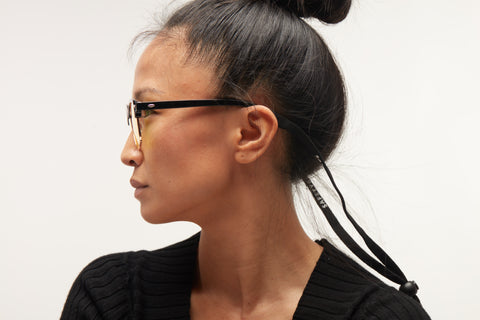Make sure your sunglasses are doing the job.
Summers are getting hotter every year—the vast majority of us have become well acquainted with the crucial ways to protect our skin when heading outside for long periods. However, it’s not just skin that needs protecting from the sun – our eyes can also be damaged by UV radiation.
Fortunately, the straightforward solution is to stick on a pair of quality sunglasses.
What kind of short-term and long-term eye problems can UV rays cause?
In the short term you’re looking at something called photokeratitis, which is basically sunburn for your corneas. If you spend too long out in the sun – I think one study has shown it’s about six hours in direct sunlight – then it can cause quite red, painful eyes. The symptoms generally resolve themselves and after about 48 hours it tends to disappear.
There are more damaging long-term effects like cataracts and macular degeneration, which can be accelerated by UV exposure. You can also get skin cancer on the eyelids and fatty tissue building up on the white parts of the eye.
The eye is ten times more sensitive to UV light than skin and although it has natural protection, it can still be quite exposed to damage.
How much time spent in the sun without protection puts you at risk? Is up to six hours OK then?
I would say it can be shorter [than six hours]. It depends on how much UV exposure there is as well. The strongest levels of UV light are between 10am and 2pm, and it’s a lot stronger during the summer months as well. Also you’re more exposed at higher altitude. It depends on a lot more than just the duration of time that you are outside.
Are reflective environments especially risky?
Yes. A reflective surface – when you’re out skiing or fishing, say – reflects a lot more light, and it’s more scattered. It doesn’t necessarily increase the chance of UV damage, but it definitely causes more irritation to the eyes in terms of glare.
What should you look for in terms of protection when buying sunglasses?
You want to find a pair of sunglasses that protect against 100% of UVA and UVB rays [this may be labelled as UV400, which protects against wavelengths up to 400 nanometers, covering both UVA and UVB rays].
This may mean it’s described as protecting against 99% of UV light as there is also UVC radiation, which has a shorter wavelength but doesn’t penetrate the ozone layer.
Also, look for something that protects against HEV light. Sunglasses have a grading system between one and four. So four is the darkest tint that sunglasses can have, which blocks out 95% of visible light. They’re for people working in really bright conditions or in high altitudes. They’re not for people who drive for example, because of the amount of light they block. Most people tend to go for a category three, which is a little bit lighter. It blocks out 85% of visible light. But all of them should say they protect against UVA and UVB – that’s the important thing.
If you’re in a brighter environment, or at high altitude, you also want them to be quite big and maybe wraparound to give you more coverage.
Can you get contact lenses that protect the eyes from UV rays?
Yes you can. Most contact lenses have the technology to protect against UVA and UVB, which is brilliant, because that will protect the internal parts of the eye. It does, however, mean that there are parts of the eye that are exposed to UV light, so it’s still a good idea to wear sunglasses on top so you’re still protecting the eye and its surroundings.
Written by Nick Harris-Fry for Coach and legally licensed through the Matcha publisher network. Please direct all licensing questions to legal@getmatcha.com.




